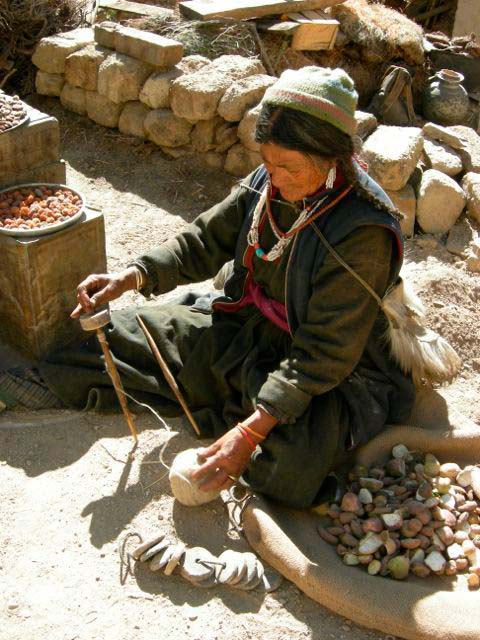by Amanda Mather, Curator of Collections
 Here is a little insight on an overlooked object, but one that helped keep us clothed for a very long time.
Here is a little insight on an overlooked object, but one that helped keep us clothed for a very long time.
Spindles are long sticks used to spin yarn, and the Spindle Whorl is the weighted piece at the end that helps maintain the spindles speed and spin.
Spindle Whorls were made of a myriad of material — coral, amber, stone, antler, and as shown in the photo to your left, pottery. For the past 9,000 years, the spindle and its ever-trusty helper the whorl has been spinning fabrics all around the world.
When weaving artifacts are found, often the spindle is gone, having been made of an organic material (often wood) that is no longer with us. Since the whorl was often made of tougher stuff, it is usually the thing that is found for the archaeological record.
Spindle Whorls have been found everywhere — Europe, Asia, Africa, and the Americas – where there is fabric to be woven, there are spindle whorls.
The example that is in our exhibition hall at the Ranch is made of a recycled piece of Puebloan pottery that has been repurposed as a whorl. It comes from a 17th century Spanish Colonial archaeological site named LA 20,000, a site for which El Rancho de las Golondrinas is the custodian.
LA 20,000 is a site that has been researched by archaeologists, including Dr. Heather Trigg of the Fiske Center for Archaeology and her graduate students, who come to toil away in the hot summer sun to learn more about Spanish Colonial lives.
Come by El Rancho de las Golondrinas during our season (June through October 1) to watch our talented weavers use spindles and whorls with expert hands — it’s an impressive thing to see to say the least.

